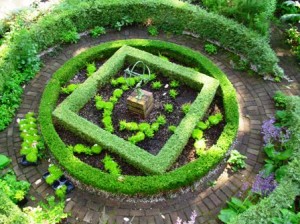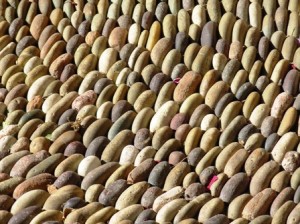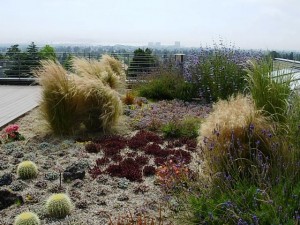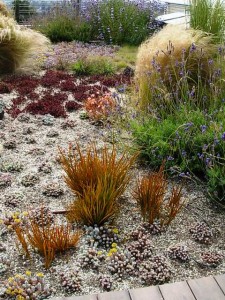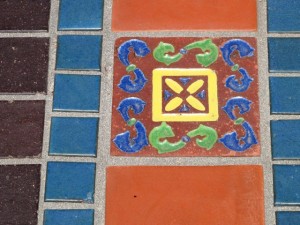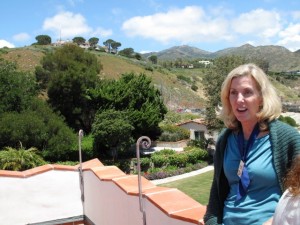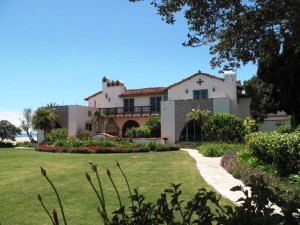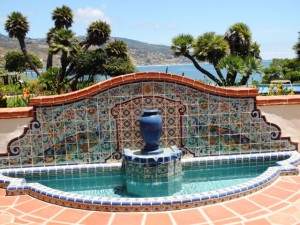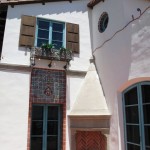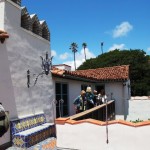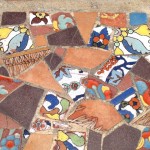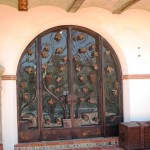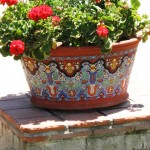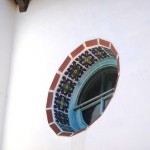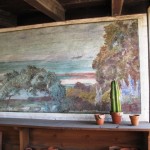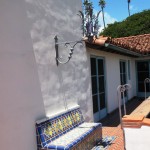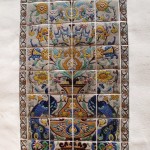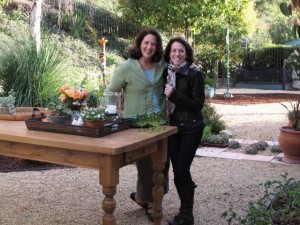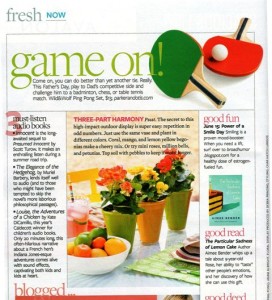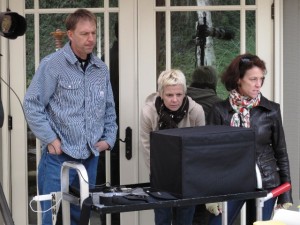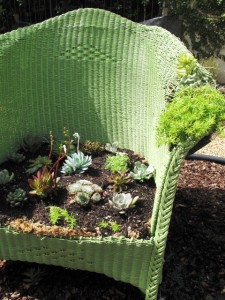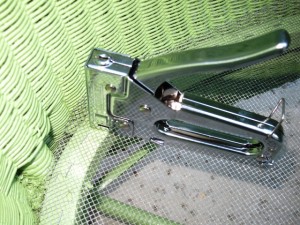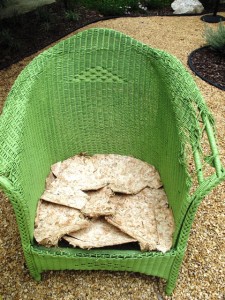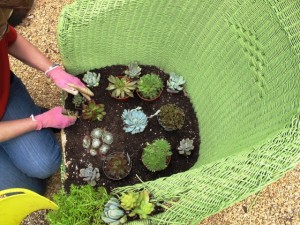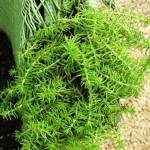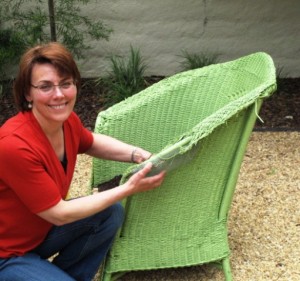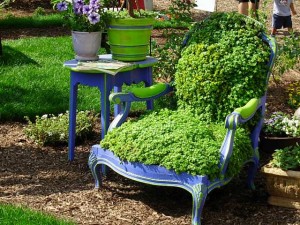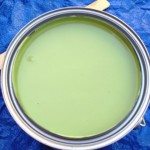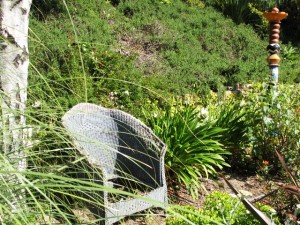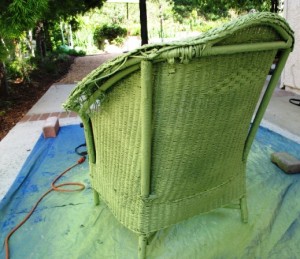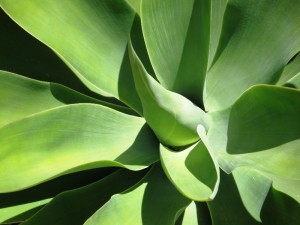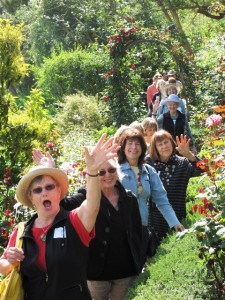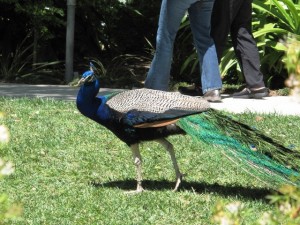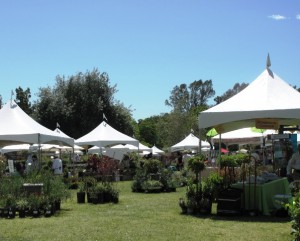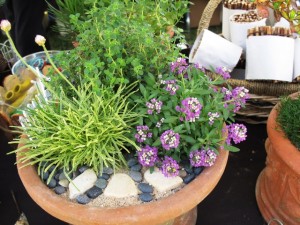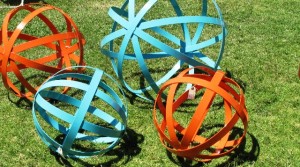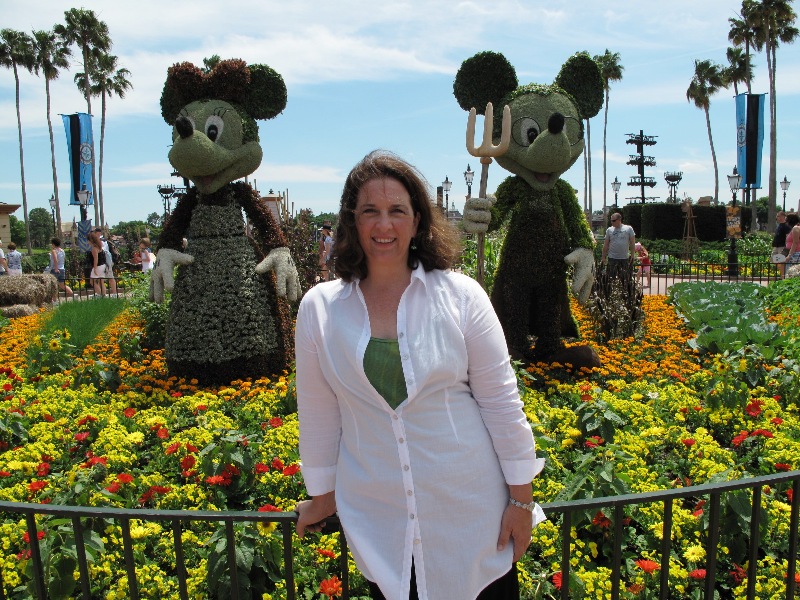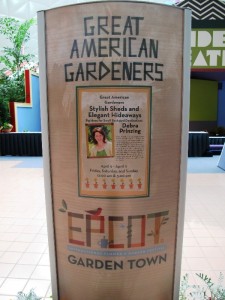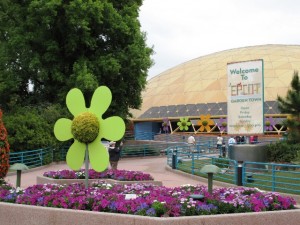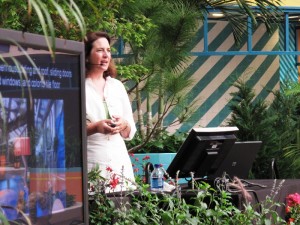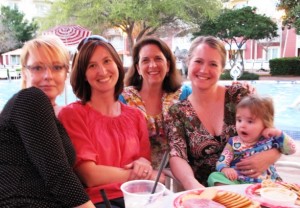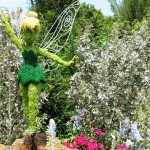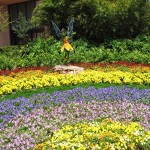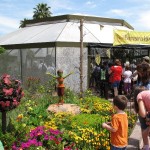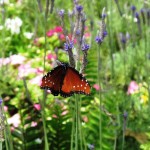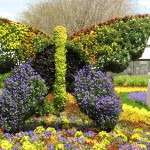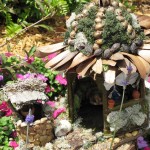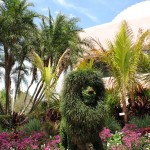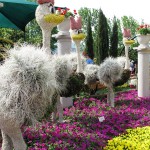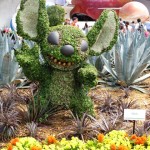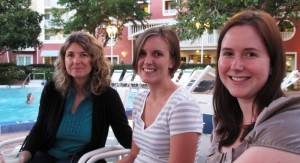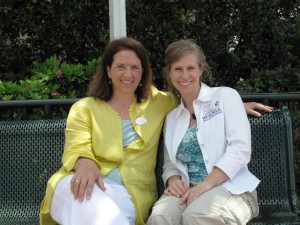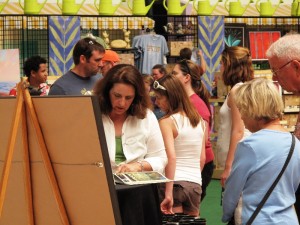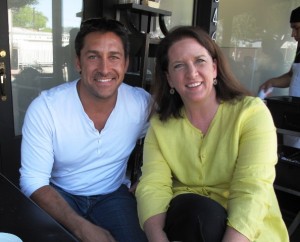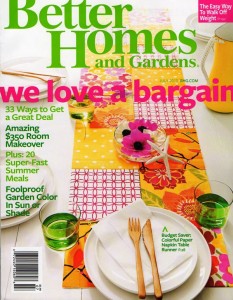 In the July 2010 issue of Better Homes & Gardens, I wrote a short item for my “Debra’s Garden” column called “Curves Ahead.” It could also have been titled “Three Cheers for the Circle.”
In the July 2010 issue of Better Homes & Gardens, I wrote a short item for my “Debra’s Garden” column called “Curves Ahead.” It could also have been titled “Three Cheers for the Circle.”
I am obsessed with round shapes — balls, spheres and orbs — and I love to dot the garden with these forms. This design trick relates to one of those basic lessons anyone who studies the art of landscape design is taught: Choose an idea and repeat it frequently.
My eye is naturally drawn to orbs and globes. They are so pleasing to me – in fact, I wrote about this passion previously – in an earlier blog post, “Zen of the Circle.”
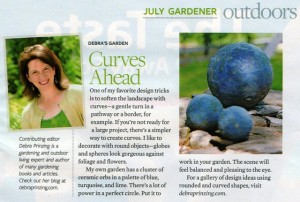 Ornamental globes, obelisks and balls have taken up residence here in my Southern California backyard — check out the photograph below.
Ornamental globes, obelisks and balls have taken up residence here in my Southern California backyard — check out the photograph below.
And it’s not just the three-dimensional geometry that puts a smile on my face. Curved outlines, such as the edge of a perennial border, patch of lawn or a turn in the path echo the orbs and reappear as arcs or crescents in the garden.
My interest in the sexy, organic globe shape has come “full circle” (pun intended) from a single idea to a cohesive design theme and a nice way to use ornamentation. Look around your own garden. Wherever you see a bare spot, perhaps it’s calling out for an orb or two.
I included a post-script note in my BH&G piece, promising to share my gallery of rounded and curved design ideas with our readers. Here it is – enjoy! Please send me your own photos and I’ll include the best ideas here, too. Check the bottom of this post for some of my favorite shopping resources.
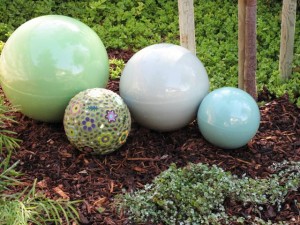
My cluster of orbs in a dreamy palette of green, blue, and teal - with a wonderful mosaic orb by Vashon Island, Wash., artist Clare Dohna
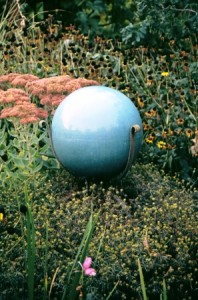
A stunning, cool blue ceramic globe in a Yakima, Wash., garden. You can tell it is mounted on a pedestal to elevate it above the foliage.
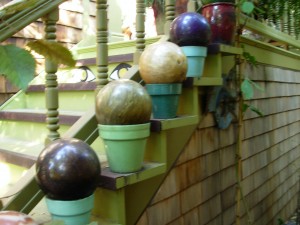
Yes, these awesome orbs are actually vintage bowling balls. Each one rests on a painted flowerpot and is stair-stepped outside the porch of Berkeley, Calif., artist Marcia Donohue.
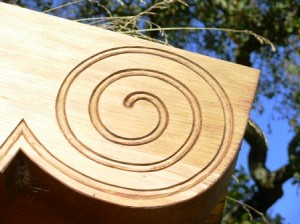
A finely-carved spiral woodworking detail appears at the end of a beam that forms the roof of a dining pavilion in our book, Stylish Sheds and Elegant Hideaways.
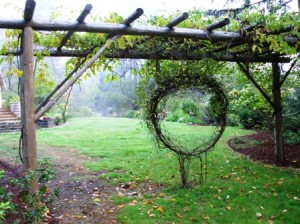
The open circle - a "moon window" or "dreamcatcher" - provides a beautiful perspective in my friend Mary-Kate Mackey's Eugene, Ore., garden. It is mounted beneath an arbor where a hard kiwi grows.
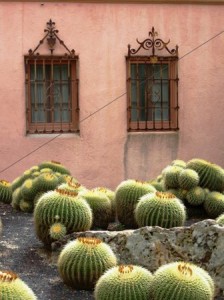
Plants like these golden barrel cactuses are naturally orb-like. You can see these at Lotusland, an estate garden in the Santa Barbara area.
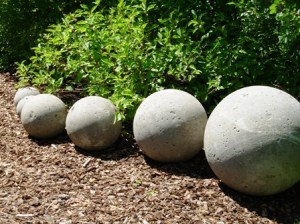
This graduated set of concrete orbs just knocked me out when I first saw it in Sun Valley, Idaho a few summer's back. Thanks to my friend Mary Ann Newcomer, I got to visit some pretty amazing landscapes there.
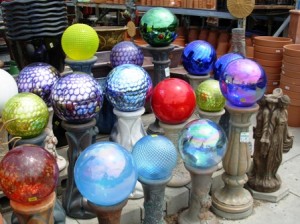
A visit to any well-stocked garden center is likely to showcase the myriad choices of balls. I spotted a rainbow of gazing balls at Green Thumb Nursery in Ventura, Calif.
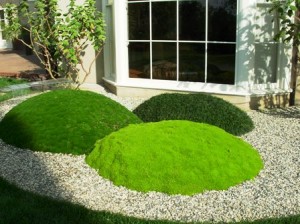
Restful, zen-like. Three types of moss are sculpted into a gravel garden display designed by Southern California landscape architect Graham Stanley.
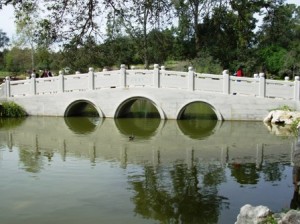
Look for circular forms in public gardens - you'll find them. The arches of a lovely stone bridge are reflected in this pond to create an almost perfect circle. This bridge is at the classical Chinese Garden, recently opened at the Huntington Library, Art Collection and Botanical Garden in San Marino, Calif.
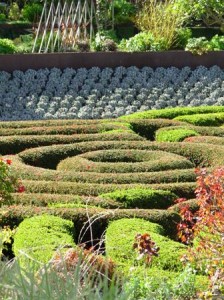
Artist Robert Irwin sculpted flowering azalea shrubs into a circular maze at the Getty Center in Los Angeles. The clipped, concentric circles bloom in white, pink and magenta flowers.
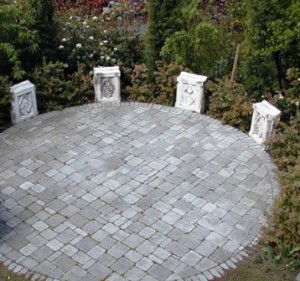
A round "carpet" laid with sand-set concrete cobble-style pavers. Designed for my Seattle friends Rand Babcock and Tony Nahra by Daniel Lowery of Queen Anne Gardens.
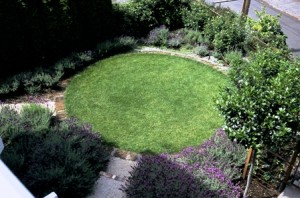
If stone isn't your thing, try turf. This tiny grass "throw-rug" appears in the Seattle backyard of landscape architect Erik Wood and designer Carina Langstraat
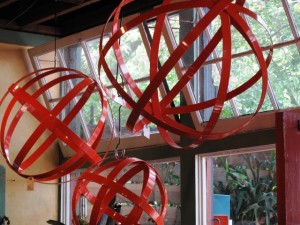
Wow! Metal obelisks - powdercoated in orange (or turquoise), designed by Annette Guttierez and Mary Gray from Potted, in Los Angeles (see ordering details below)
Best resources for spherical garden ornamentation:
Pot-ted Store: Three graduated sizes of balls made from steel strapping will lend a lovely moment of architecture to the landscape. I have the medium-sized one in weathered steel (my preferred material). Annette and Mary, owners of Los Angeles-based Pot-ted, now sell a series finished with bright orange and turquoise powder-coating – their fav hues. Oops – I mean “aqua” and “tangerine.” Inquire about custom colors! Prices: $98 (18-inches); $139 (24-inches); and $169 (30 inches). Shipping available.
Bauer Pottery Garden Orbs: My friend Janek Boniecki has revived the classic California earthenware known as Bauer Pottery. In addition to making reproduction urns, dishes and serving pieces (in that awesome, sun-drenched palette), Janek and crew also create ceramic garden orbs glazed in Bauer colors. Yellow, dove gray, French blue, Federal blue, chartreuse, lime green, midnight blue, parrot green, turquoise, white, black and aqua (for some reason, the Bauer orange pieces are slightly more expensive, perhaps because of the glazing involved).
I am a bit addicted to these “globally admired” orbs, thanks to the company’s occasional factory outlet sales in Los Angeles. I have five or six of these gumball-shaped objects, which look tres-bien in and among foliage, flowers, blades and stems. Prices: $75-$82 (8-inch); $100-$110 (12-inch); and $150-$165 (15-inch). If you think you’ll be in the Los Angeles area sometime, make sure to check the Bauer web site to see the warehouse sale schedule. You will definitely find great prices and maybe even an orb or two (if I don’t get there first!).
Clare Dohna, Mosaic Artist: Based on Vashon Island, Wash., artist Clare Dohna makes vibrant mosaic tiles in dazzling botanical shapes (flowers, bugs, leaves and more). She uses these tiles to adorn the surfaces of all sorts of wonderful garden sculpture and art, such as bird baths, bird houses, egg shapes and — my favorite – mosaic spheres. You can see one of her pieces at the top of this page; it plays nicely with the solid-colored Bauer orbs. Contact Clare directly (from her web site) to inquire about color schemes and prices.









